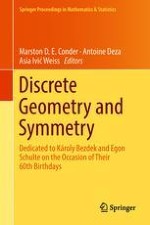This book consists of contributions from experts, presenting a fruitful interplay between different approaches to discrete geometry. Most of the chapters were collected at the conference “Geometry and Symmetry” in Veszprém, Hungary from 29 June to 3 July 2015. The conference was dedicated to Károly Bezdek and Egon Schulte on the occasion of their 60th birthdays, acknowledging their highly regarded contributions in these fields.
While the classical problems of discrete geometry have a strong connection to geometric analysis, coding theory, symmetry groups, and number theory, their connection to combinatorics and optimization has become of particular importance. The last decades have seen a revival of interest in discrete geometric structures and their symmetry. The rapid development of abstract polytope theory has resulted in a rich theory featuring an attractive interplay of methods and tools from discrete geometry, group theory and geometry, combinatorial group theory, and hyperbolic geometry and topology. This book contains papers on new developments in these areas, including convex and abstract polytopes and their recent generalizations, tiling and packing, zonotopes, isoperimetric inequalities, and on the geometric and combinatorial aspects of linear optimization. The book is a valuable resource for researchers, both junior and senior, in the field of discrete geometry, combinatorics, or discrete optimization. Graduate students find state-of-the-art surveys and an open problem collection.
